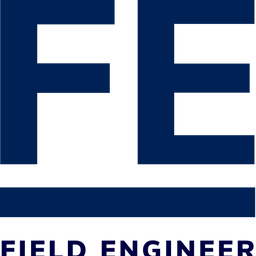Waterfall vs Agile: Which Methodology is Right for Your Project?
Agile and Waterfall are two popular project management methodologies. Agile is flexible and adaptable, while Waterfall is structured and sequential. Choosing the right one is crucial for project success. This article compares and contrasts them for you to decide.
When it comes to project management, two main methodologies are widely used: Agile and Waterfall. But which one is the right fit for your team and project?
Agile and Waterfall have unique approaches, advantages, and disadvantages. Agile is known for its flexibility and adaptability, while Waterfall is known for its structured and sequential approach.
Choosing the right methodology can make all the difference in the success of your project. In this article, we will compare and contrast Agile and Waterfall methodologies so that you can decide which one is right for you.
What is the Agile Model?
The Agile Model is an iterative software development methodology emphasizing rapid iteration and customer involvement. The approach is designed to be adaptive, allowing teams to respond quickly to changes in the product requirements, technology available, or timelines.
It is divided into short sprints of work, each with a predetermined set of objectives and deliverables. During each sprint, teams review feedback from the customer and make necessary adjustments to ensure they meet customer needs. Agile's main focus is on delivering working software as quickly as possible.
This enables teams to react quickly when customers identify flaws in their product or their competitors introduce groundbreaking new features into the market.By breaking a project into shorter periods with distinct objectives, agile teams can more precisely track progress and adjust goals if needed.
This ensures that stakeholders remain engaged throughout the development process and get continual feedback from the team and customers about how well the project is progressing toward its goal.
Pros and Cons of the Agile Model
Pros of the Agile Model
The Agile Model is a great tool when it comes to creating a flexible and customer-centric product. One of the biggest pros the Agile model offers is its ability to handle changes in customer needs quickly and efficiently by providing timely and integrated feedback.
This is possible because the process allows for inputs from stakeholders or clients with the project team, ensuring everyone knows what is expected of them and what their goal must achieve. The model also incorporates continuous testing, which helps detect and fix problems early on, thus ensuring product quality while keeping costs down.
The communication in the Agile Model is also a big plus; since it requires regular check-ins between all those involved, any issues can be quickly detected and solved. Transparency within this process also enables everybody to know exactly what’s happening in the project at all times, avoiding any confusion that could affect its outcome.
Furthermore, due to its emphasis on business value, crucial parts of the project are given much more priority, allowing clients to have end products delivered quickly and meet their individual needs. All these advantages make this model highly sought after by software developers who need quick solutions for dynamic systems which rely heavily on user input.
Cons of the Agile Model
Agile Methodology has been widely adopted among various software development teams for its flexible approach and ability to deliver quickly. However, despite its many advantages, Agile can have some drawbacks, especially in small development projects.
The first disadvantage is the cost of implementation with Agile projects which is often higher than other development methods. As it is an iterative process, additional costs might be involved in rework or license fees. Furthermore, the development methodology requires a team that is well-versed in all Agile concepts to maintain a certain level of discipline and commitment throughout the life cycle.
Secondly, due to its nature of flexibility, there is a lack of proper structure compared with Waterfall models, where there are ways to document different stages and systematically track progress. These circumstances add to the difficulty in managing such teams, which calls for highly skilled personnel overseeing each set of activities within the project.
What is the Waterfall Model?
The Waterfall Methodology is an old yet efficient approach to software development. This model offers a top-down approach in which each successive phase depends on the deliverables of the previous step. It is based on a collection of phases that begin with gathering requirements and ends with maintenance. Each phase must be completed before moving on to the next - there is no going back.
Starting out, the project development team will observe and discuss customer needs to determine what they want from the final product. From this, the team then designs the end result and how it should behave. Afterward, coding comes next as developers write code to match their previous designs.
Creating tests for quality control follows after that, and lastly comes implementation and maintenance, where real users go through it all and identify weaknesses or give feedback for enhancements as necessary. All these stages are intertwined, thus emphasizing why each step must be done correctly from start to finish for success at any level during the process.
Pros and Cons of the Waterfall Model
Pros of the Waterfall Model
The Waterfall Model is one of the most commonly used development models for small-scale projects due to its simplicity and easy management. It breaks down the project into individual phases which can be easily handled and monitored, making it suitable for software projects requiring a limited number of tasks.
As the project's requirements are clearly identified at the beginning, there’s no need for any specialized training of project managers or employees to execute this model.
Additionally, all processes and results are well documented during each phase, allowing stakeholders to easily track cost and progress. This greatly reduces time-to-market as issues can be spotted as soon as they arise rather than left until later stages.
Furthermore, since cost is fixed before starting the project, thanks to rigorous planning carried out by skilled professionals, there will be no surprise changes in final cost or delays in terms of delivery.
In conclusion, these pros make the Waterfall Model an ideal choice for those who wish to ensure timeliness and accuracy when it comes to managing their projects efficiently.
Cons of Waterfall Model
The Waterfall Model is a popular project management technique that follows a linear approach to developing software and other products. However, certain disadvantages are associated with this model, which can create challenges during the development and delivery process. One of the main cons of the Waterfall Model is that all the requirements must be established in the beginning stage.
This can create long delays as more information may need to be gathered before the project progresses. Making any changes to the earlier stages in this model is very difficult due to its linear structure, which often leads to rework and costly corrections down the line.
Additionally, Waterfall Model breaks projects into distinct phases, which can be difficult when dealing with large-scale projects. Estimating progress within each phase is complex as it requires careful consideration of inter-dependencies between design, build, and test activities for accurate task duration estimates.
Furthermore, testing begins only after development efforts have been completed resulting in higher chances of bugs being found later on in production. Any errors at this stage become expensive to fix as they have already gone through several stages without being corrected, resulting in extra time and resources being spent on bug fixing and maintenance down the line.
Waterfall vs. Agile: How To Choose the Right Methodology
The Waterfall Model and the Agile Model are two of the most popular methodologies for software/project development methodologies. The Waterfall Model is a linear, sequential approach to developing and testing software, while the Agile Model has an iterative and continuous life cycle for this purpose.
Deciding which model to apply will depend on various factors such as rigidity, collaboration, process, customer satisfaction and whether changes can be made throughout the project.
Agile emphasizes customer satisfaction by involving them throughout the development process, whereas Waterfall does not require the participation of customers. The former is flexible, and changes can be made even after the initial planning stage has been completed.
On the other hand, Waterfall follows a rigorous sequence of steps that cannot be altered once development begins- making it less suitable for projects that have to change or evolving requirements. It should only be used when projects with well-defined requirements are in place.
Both methods emphasize different aspects of projects with varying degrees of focus on specific processes, but ultimately it comes down to choosing which best fits your particular project’s needs.
When deciding between agile and waterfall methods for a specific project, certain criteria should be considered. The foremost of these is the type of client the team is dealing with. If it’s an internal client or one that requires a lot of customer feedback, then agile may be the better choice as this approach facilitates iterations and offers up greater opportunity for customer feedback.
On the other hand, an external client with existing expectations and definitions of quality may benefit more from a waterfall approach as it creates clarity regarding what will be delivered and when.
The second factor to consider is team size Factors such as skillset diversity, team chemistry, and individual motivators also need to be assessed before deciding on which methodology to use. Agile works well on small teams as fewer people are involved in decision-making, making communication easier. In contrast, large teams who need parallel development efforts can benefit from a waterfall process where tasks are divided among specialized groups.
Another important factor to consider is timeline - if ample time and resources are available, then an agile method will allow for quick iterations, but tight deadlines require clear-cut processes for meeting set goals like those provided by a waterfall approach. Lastly, it's important to evaluate organizational culture - agile processes require teams to be highly collaborative, autonomous, and self-managing, which can be challenging in more hierarchical environments.
In conclusion, the agile and waterfall methods offer distinct ways to approach a project or process. The traditional water method may be a suitable option for certain projects that need to stick to strict deadlines and don’t involve much variation or collaboration.
On the other hand, the Agile methodology encourages experimentation and allows teams to continuously work together in order to deliver products that meet customer requirements quickly.
It is important to remember that there is no one-size-fits-all solution for managing projects; rather, the choice of method should depend on the specific task at hand. By weighing out the pros and cons discussed in this essay, a well informed decision can be made as to which method best suits your individual requirements.








